Book: Health and Fitness
Author: Nayma Nishat - Researcher, Health & Fitness
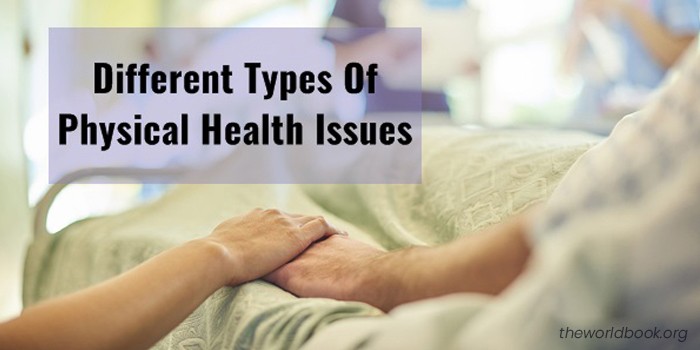
To improve your chances for good health, you should know different types of physical health issues. Health issues can sometimes be confusing but understanding common health issues and what can be done to avoid them can go a long way towards reducing the stress you feel when it comes to your health.
Coping with the mental and emotional challenges of a health issue requires a realistic but also positive approach. Adapting to your condition or feeling good about the future may seem impossible at first, but it can be accomplished.
So, it is very important to know health issues especially issues based on our life span to increase the chances of having good health.
Certain health problems affect people at different stages of life. Think about the life span and list out the stages of growth you might consider. How many stages are on the list? Perhaps we have three: childhood, adolescence, and adulthood.
And it is crucial to know the physical health issues that we might face in every stages of our life. To understand the issues we can stay healthy and manage health problems that affect bones, joints, muscles, and skin etc.
Childhood is period of the human lifespan from 1–13 years of age. As a parent, your child’s health is your biggest concern. Here is a list of common illnesses and health issues to keep in mind when caring for your child.

Babies are often born with one or both of the tear ducts blocked. You will probably see a bit of mucus around his eyelid, this blockage can cause infections, so talk to your doctor to teach you how to massage his tear ducts to fix the problem.
Many babies get a cold before they are three months old. You can help him feel better by placing a vaporizer in his room, and sucking the mucus out of his nose with a rubber bulb. Do not give him any medication before consulting with your doctor.
Diarrhea is defined as very loose and watery stools produced more than six to eight times a day. It may be a symptom of an infection, consult your doctor.
Soft mustard-colored stools are the result of breastfeeding and formula feeding, so there’s nothing to worry about.
Sleeping is essential to ensure the correct growth and development, both physical and mental, of your little one; however, excessive hours of sleep may make you more tired as if you had not slept at all. When you know your baby’s sleep patterns, you will also know when he sleeps more than normal.
Temperature is not the only factor that indicates that a fever is serious. Age is an important factor (fever is more of a concern in babies younger than 3 months), and so is their behavior; If your baby continues to play and eat normally, a high fever may not be a cause for alarm.
Remember that everyone’s temperature rises towards the end of the afternoon and early evening, and falls between midnight and the early hours of the morning.
If your little one is in a bad mood or feels hot, take his temperature, and if it exceeds 38° C, call your doctor.
If you have white patches in your mouth, it is probably a yeast infection called thrush and can be easily treated. Redness around fingernails, toenails, or in the umbilical area could also indicate an infection. Call the doctor to make sure everything is okay.
If your baby has a scalp rash, he has a temporary condition called cradle cap. To help him, wash and brush his hair to remove rashes. Make sure to see your doctor so that you are completely sure that everything is fine.
Some babies die in their sleep; this is called sudden infant death syndrome. SIDS affects 1 in 1,000 children, and it usually happens after the baby has been put to sleep. 90% of cases occur between 2 and 6 months of age.

Here are some of the most important recommendations to help prevent SIDS:
To ensure that our baby is protected against diseases, it will be essential to comply with regular visits to the pediatrician and follow the vaccination schedule. Despite this, during the first year of life babies may suffer some kind of discomfort or minor health problem, but that causes their discomfort and, therefore, our concern.
Adolescence is the age that follows childhood and that runs from puberty to adulthood.
Adolescence is usually outlined in three stages that may overlap each other.

Adolescence, according to the World Health Organization (WHO), is established between 10 and 19 years of age and represents a sixth of the world’s population, about 1,200 million people.
The usual thing is to enjoy good health in childhood and adolescence. But on this aspect, the WHO shows its concern about the health of adolescents, since the number of premature deaths and morbidity during adolescence are still considerable.
At this time of life, there are many disorders or diseases common to other stages, but that in this age group may have special characteristics and there are also other specific pathologies of this age group:
Complications related to pregnancy and childbirth are the leading cause of mortality among 15 to 19-year-old girls worldwide. Approximately 11% of the world’s births are to adolescent mothers, and the majority are registered in developing countries.
More than two million adolescents are living with HIV in the world. On the African continent, deaths due to the AIDS virus are increasing. The reason is that, despite the greater number of children with HIV who survive and reach adolescence, not all receive the care and support they need to stay healthy and prevent transmission. In sub-Saharan Africa, only 10% of boys and 15% of girls aged 15-24 know their HIV status.
One of the most common manifestations in puberty is the appearance of lesions on the face and in other locations such as the chest and back, which are known as acne. They are a very frequent cause of medical consultation at this stage of life.
Violence mainly affects boys. In fact, assaults represent 43% of all deaths of adolescent boys in low-income countries. Among girls, sexual violence is more frequent. Worldwide, 1 in 10 girls under the age of 20 indicates having suffered sexual violence.
It is some of the main causes of injuries, violence, and risk behaviors, such as unprotected sex or dangerous behavior on the road. One in ten adolescents uses tobacco. Banning the sale of tobacco products to minors, raising the price of those products by taxing them with higher taxes, banning tobacco advertising, and ensuring smoke-free environments are extremely important. The consumption of alcohol and tobacco also affects adult life and life expectancy.
Headache due to migraine or tension headaches is a disorder that can begin in adolescence. Therefore, the pediatrician’s assessment is especially important to clarify symptoms and reach the diagnosis and etiology of the process, especially when the symptoms are not very clear.
Developing good habits of healthy eating and physical exercise in adolescence is essential to enjoy good health in adulthood. In developing countries, it is recommended to deworm the intestine regularly to prevent deficiency states.
Besides these health issues about 1 in 4 teens lives with a chronic disease, such as asthma, diabetes, or inflammatory bowel disease. Although rare, cancers such as leukemia, lymphoma, bone cancer, and brain tumors also occur.
The rights of the child (under 18 years of age) to survive, grow and develop are set out in various international legal instruments. Work should continue to promote healthy habits and behaviors at this crucial stage of life. Society and governments must better protect young people against the risks that threaten adolescent health, as an investment for the future development and prosperity of their societies.
Adulthood is the longest in a person’s life, approximately 40 years, so the health issues that may appear change considerably whether it is a young adult, who may have problems similar to those of adolescence, or a mature adult, whose problems begin to resemble those of the elderly.
Studies have been conducted over the past 40 years that have looked at the relationship between individual lifestyles and the subsequent incidence of illness and death. These studies showed that specifically at maturity, more than half of the cases of death and illness were related to factors related to lifestyle and not to age.
We often think that young adults, that is, adults between the ages of 18 and 35, given the characteristics of this stage, are less likely to develop diseases; we even believe that they are in perfect health. But this belief is increasingly far from reality to the point of seeming a myth.

The most frequent health issues among young adults are accidents, infectious diseases, diabetes, being overweight, and the use of alcohol, tobacco, and drugs; as well as medical issues related to pregnancy, sexually transmitted diseases and to these are added emotional and psychological conditions such as stress, anxiety, and depression.
Next, we will emphasize some diseases.
Due to the climatological characteristics of our country, this type of disease is very common. Ailments such as the common cold, pharyngitis, bronchitis, pneumonia, especially affect young adults.
The hygiene of our homes and workplaces is essential, but also sudden changes in temperature should be avoided and vitamins, mainly vitamin C, should be consumed.
In recent years the indicators of this type of disease have increased in Peru. Bad eating habits, lack of cardiovascular physical activity, as well as lifting weights on a regular basis, and excess of processed or high-sugar foods, produce these conditions.
We can prevent these conditions by eating a diet high in fruits and vegetables, avoiding sodas and sugary foods, as well as practicing a sport at least three times a week.
These conditions that can be related to overwork, fatigue and the tasks of daily life; they affect the health of our mind and also of our body. Physical activity, meditation, yoga, as well as working in a harmonious environment are essential for taking care of our health.
Enjoy your youth! Learn to take care of your health so that you live longer and better.
Middle adulthood is the stage that goes from 40 to 65 years old and is the one with the greatest intellectual development but in which we begin to notice important physiological changes. These changes are manifested as alterations in appearance, in sensory, motor and systemic functioning, as well as in their reproductive and sexual capacities.
Health in middle adulthood is affected by various factors such as socioeconomic status, smoking, alcoholism, drug use and little physical exercise, ethnicity, and gender.

The most common chronic diseases or conditions are asthma, bronchitis, diabetes, nervous and mental disorders, arthritis, rheumatism, hypertension, coronary heart disease, stress, osteoporosis, impaired sight and hearing, dysfunction of the circulatory, digestive and genitourinary.
The five leading causes of death between the ages of 45 and 64 are cancer, heart disease, stroke, accidental injury, chronic pulmonary obstruction, and related disorders such as asthma.
It is an episodic disease, with acute exacerbations that alternate with symptom-free periods. Most attacks are short-lived, and after them, clinical recovery is usually complete.
It is a metabolic disorder characterized by the lack of insulin or the lack of effectiveness of it, which results in high concentrations of sugar in the blood. Diabetes mellitus has become an important public health problem in the average adult; the most common type that they present is type 2 diabetes.
It is a chronic inflammatory pathology, systemic in nature, characterized by the way it affects the joints. This disease generally manifests itself towards the third or fourth decade of life, although it can become evident at any age, occurring more frequently in females.
It is a chronic disease characterized by a continuous increase in blood pressure levels in the arteries. Hypertension is an asymptomatic disease and easy to detect. Chronic hypertension is the most important modifiable risk factor for developing cardiovascular disease, as well as for cerebrovascular and kidney disease.
It is a disease that is characterized by a decrease in bone density due to the loss of normal bone tissue. The bone is correctly calcified, but there is less bone per unit volume. This leads to a decrease in the resistance of the bone to trauma or loading, with the consequent appearance of fractures.
In general, after 40 years it is advisable to have a medical check-up, which can be repeated every two years. And, in the case of people over 50, it is much more than advisable to have this type of review.
It is important to get a full medical check-up for people with cardiovascular risk factors such as smoking, diabetes, high blood pressure, hypercholesterolemia, obesity, etc. or with background for some disease in their families, such as a parent who has suffered from cancer.
It used to be said that old age began at approximately 65 years of age, but today this interval tends to be called “older adults”. Older adults are more likely to suffer illnesses that seriously deteriorate their health, especially, physically.
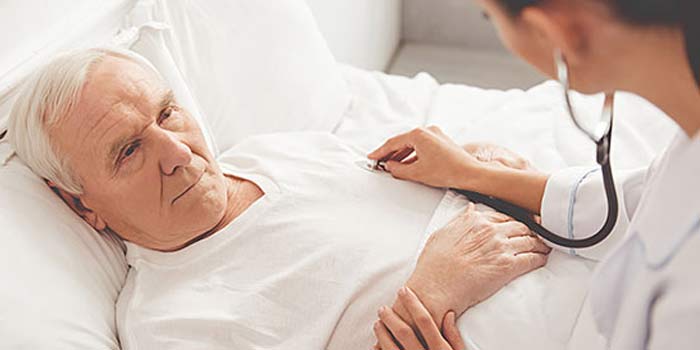
The elderly are a sector of the population that will soon increase their percentage due to the fact that young people and young adults, who are currently the majority, will enter this stage of their lives.
By nature, after 60 years of age, the human body begins to undergo physiological changes such as hearing loss, cataracts, back pain and neck pain. A decrease in the physical capacities of the human being will begin to live in this stage. Let’s know the other issues.
Aging can manifest itself with emotional changes in people derived from the transformations that they live at a physiological and psychological level. It is important to support and always be by the older adult’s side so that they do not fall into depression.
In addition to these physical changes, the decrease in bone mass could be accompanied by diseases such as osteoporosis, which are typical of age. It is important, before old age, to maintain a healthy lifestyle with good eating, exercise and rest habits to reduce these risks.
The largest and longest organ in the body, the skin, begins to undergo visible changes as it loses its elasticity. In addition, inclement weather will also affect the human being too much. It is essential to take care of your skin with sunscreen and even specialized hygiene products.
It is also natural that the human body systems begin to fail. One of the most common is the urinary system, because the elderly may leak urine due to an alteration in the functioning of the bladder.
Of course, the mind also loses capacities, with effects on cognitive and daily activities such as memory, attention and the speed of processing information. Diseases such as Alzheimer’sare common at this stage of life.
To carry out preventive activities in older adults, various aspects must be taken into account; considering not only the risk of disease but also the expectations, ideas, feelings, and function alteration that the disease produces and the particular context of each person.
Now let’s take a look at the Top 10 Most Common Physical Health Issues in 2021.
There are many types of physical health issues, from diabetes and AIDS to arthritis and persistent tiredness. While medical science has made great strides in developing effective treatments for the physical effects of these diseases, many victims continue to face an astonishing challenge to their mental and emotional health.
One of the biggest fears is the uncertainty associated with chronic illness. The disease may be sporadic and last only a short time, or it may be permanent and gradually worsen over time.
Chronic illnesses can force many potentially stressful lifestyle changes, such as stopping activities you enjoy, adjusting to new physical limitations and special needs, and paying for expensive medications and treatment services. Let’s get to know about the most common physical health issues.
Cardiovascular disease (CVD) is a general term for conditions affecting the heart or blood vessels.
It’s usually associated with a build-up of fatty deposits inside the arteries, known as atherosclerosis and an increased risk of blood clots. It can also be associated with damage to arteries in organs such as the brain, heart, kidneys, and eyes.[1]
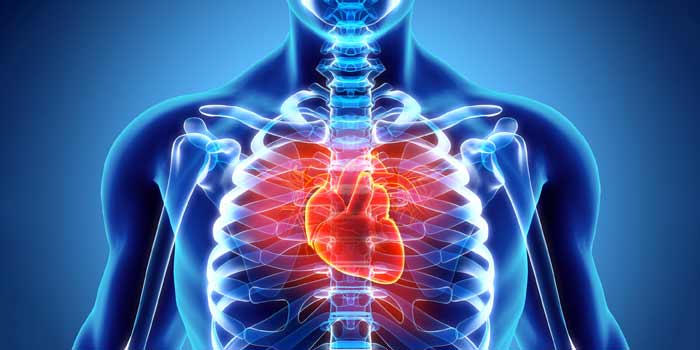
WHO says cardiovascular diseases (CVDs) take the lives of 17.7 million people every year, 31% of all global deaths. Triggering these diseases which manifest primarily as heart attacks and strokes are tobacco use, unhealthy diet, physical inactivity, and the harmful use of alcohol. These, in turn, show up in people as raised blood pressure, elevated blood glucose, risks detrimental to good heart health.[2]
But it can be prevented with a healthy lifestyle by avoiding Tobacco use, physical inactivity, and unhealthy diet and reducing the salt intake.
A stroke is called a cerebrovascular accident (CVA), or brain attack. It occurs when part of the brain loses its blood supply and stops working. This causes the part of the body that the injured brain controls to stop working, part of the brain cannot get the blood and oxygen it needs. And within minutes, brain cells begin to die.

But the good news is that strokes can be treated and prevented. Adopting a healthy lifestyle is the best way to prevent a stroke. A healthy lifestyle includes Controlling high blood pressure, Controlling diabetes, avoiding alcohol and tobacco use, and eating a diet rich in fruits and vegetables.
Cancer is the uncontrolled growth of abnormal cells anywhere in a body. Anything that may cause a normal body cell to develop abnormally potentially can cause cancer; general categories of cancer-related or causative agents are as follows: chemical or toxic compound exposures, ionizing radiation, some pathogens, and human genetics.

Cancer symptoms and signs depend on the specific type and grade of cancer; although general signs and symptoms are not very specific the following can be found in patients with different cancers: fatigue, weight loss, pain, skin changes, change in bowel or bladder function, unusual bleeding, persistent cough or voice change, fever, lumps, or tissue masses.[3]
There is no good evidence that can cure any cancers but the doctor suggests that a balanced diet and good nutrition can help an individual’s combat cancer. Maintaining a healthy diet and weight and be physically active, protecting skin from the sun, and doing regular medical checkups and taking medicines can prevent cancer from developing.
Arthritis is an inflammation of the joints. It can affect one joint or multiple joints. There are more than 100 different types of arthritis, with different causes and treatment methods. Two of the most common types are osteoarthritis (OA) and rheumatoid arthritis (RA).

The symptoms of arthritis usually develop over time, but they may also appear suddenly. Arthritis is most commonly seen in adults over the age of 65, but it can also develop in children, teens, and younger adults. Arthritis is more common in women than men and in people who are overweight.[4]
When the joint symptoms of osteoarthritis are mild or moderate, they can be managed by balancing activity with rest, avoiding excessive repetitive movements, using hot and cold therapies, strengthening the muscles around the joint for added support, regular physical activity, and taking over-the-counter (OTC) pain relievers or anti-inflammatory medicines.
Diabetes is a number of diseases that involve problems with the hormone insulin. Normally, the pancreas (an organ behind the stomach) releases insulin to help your body store and use the sugar and fat from the food you eat.

Diabetes can occur when the pancreas produces very little or no insulin, or when the body does not respond appropriately to insulin. As of yet, there is no cure. People with diabetes need to manage their disease to stay healthy.[5]
To avoid getting diabetes, workout regularly, cut sugary foods and refined carbs from your diet quit smoking, and optimize vitamin d level.
Respiratory diseases are diseases of the airways and other structures of the lung. Some of the most common are chronic obstructive pulmonary disease (COPD), asthma, occupational lung diseases, and pulmonary hypertension.
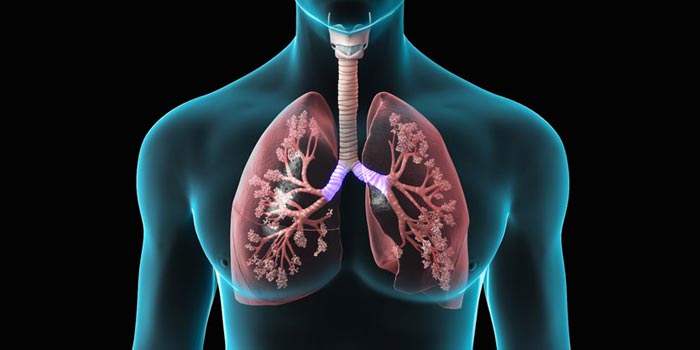
In addition to tobacco smoke, other risk factors include air pollution, occupational chemicals and specks of dust, and frequent lower respiratory infections during childhood. Respiratory diseases are not curable. However, various forms of treatment that help dilate major air passages and improve shortness of breath can help control symptoms and increase the quality of life for people with the disease.[6]
Alzheimer’s disease is a progressive disease that destroys memory and other important mental functions. At first, someone with Alzheimer’s disease may notice mild confusion and difficulty in remembering. Eventually, people with the disease may even forget important people in their lives and undergo dramatic personality changes.
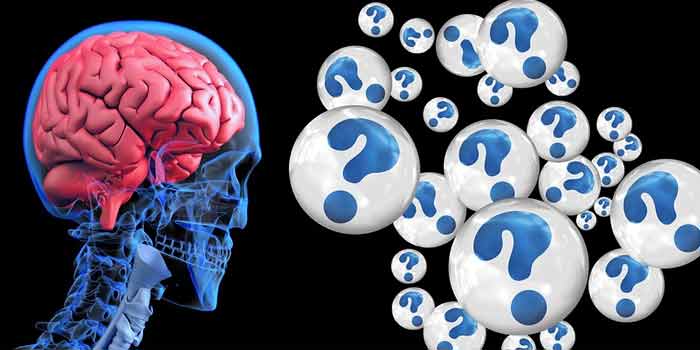
In Alzheimer’s disease, the brain cells degenerate and die, causing a steady decline in memory and mental function. Currently, Alzheimer’s disease medications and management strategies may temporarily improve symptoms. This can sometimes help people with Alzheimer’s disease maximize function and maintain independence for a little while longer. But because there’s no cure for Alzheimer’s disease, it’s important to seek supportive services and tap into your support network as early as possible.[7]
Influenza is a viral infection that attacks your respiratory system, your nose, throat, and lungs. Influenza, commonly called the flu, is not the same as stomach “flu” viruses that cause diarrhea and vomiting. For most people, influenza resolves on its own. But sometimes, influenza and its complications can be deadly.[8]

Pneumonia is an infection in one or both lungs. It can be caused by bacteria, viruses, or fungi. Bacterial pneumonia is the most common type in adults. Pneumonia causes inflammation in the air sacs in your lungs, which are called alveoli. The alveoli fill with fluid or pus, making it difficult to breathe.[9]
Overweight and obesity are defined as abnormal or excessive fat accumulation that may impair health. Body mass index (BMI) is a simple index of weight-for-height that is commonly used to classify overweight and obesity in adults. It is defined as a person’s weight in kilograms divided by the square of his height in meters (kg/m2).[10]
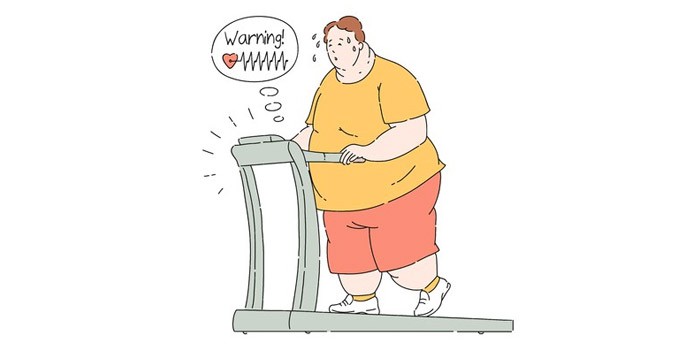
By promoting healthy eating habits and doing exercise on a regular basis, cutting down the consumption of fatty and sugary foods, and increasing the intake of more fruit, vegetables, nuts, and whole grains can reduce the risk of Overweight and obesity.
Constipation, problems of the prostate gland, elderly & sex, dyspepsia, and urinary incontinence are also included as a physical health issue.
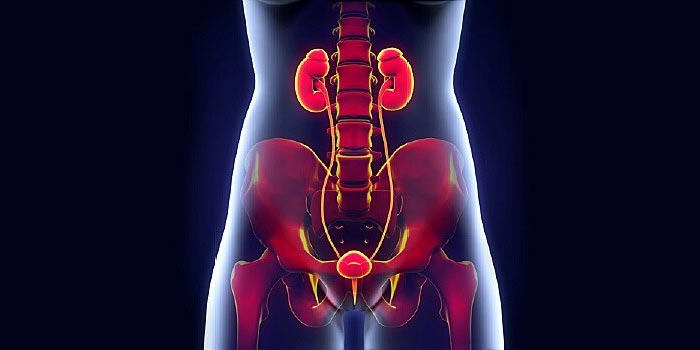
Nowadays, these are becoming common issues of physical health. To prevent these diseases and infections you should take essential nutrients and maintain good physical health.
Learn more by reading Physical Health – What, Why & How?
It is required to know different types of physical health issues to prevent them from happening. We must not ignore any health issues if we find in our body because even our daily life can be difficult.
A study of patients with chronic tension-induced headaches indicated that they experienced lower performance in their jobs and in social function and were three to fifteen times more likely to be diagnosed with anxiety or mood disorders.
Maintain social relationships, establish and maintain quality relationships with friends and family. Maintain a daily routine of work, errands, housework, and hobbies whenever possible. Add physical activity to your lifestyle.
You can know more from my next article Recommended Physical Health Activities for All Ages. This will give you a feeling of stability within the chaos and uncertainty of your illness. Eat Well, Keep Active and Stay Safe.
References:
© 2025 The World Book. All Rights reserved.
Founder: Nayma Nishat